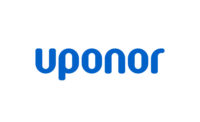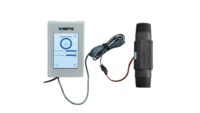For those who design in BIM/CAD, manufacturer-provided content is widely viewed as being superior to generic, out-of-the box content when planning and designing a project. The data embedded within manufacturer-provided content is unique to the characteristics of the product, providing engineers with the ability to visualize a system’s installation or a model’s performance within a building before construction begins.
Unfortunately, despite this preference, the quantity of manufacturer-provided content currently available to BIM/CAD users is disproportionately distributed between architects and MEP (mechanical, electrical, plumbing) engineers, largely in favor of the former.
When designing with crosslinked polyethylene pipe, or PEX — a relative newcomer to the commercial engineering world — it’s especially important to have access to manufacturer-provided content when designing these types of plumbing, hydronic piping, or radiant heating and cooling systems into a structure.
-
Manufacturer-provided PEX content ensures the system takes advantage of the unique features of PEX, such as the flexibility of the product.
-
This content also takes into consideration the challenges, such as expansion and contraction of the pipe.
Having this manufacturer-provided content is especially valuable with hybrid, PEX-and-metal systems, which are becoming more commonplace in today’s commercial building projects. It is vital for engineers to have the content from different manufacturers that can work cohesively in a single system.
For example, when using a connector between a length of copper pipe and a length of PEX — creating the transition between materials — that fitting must successfully bridge the metal-to-plastic connection for the entire system to work. Along with a successful, physical connection between components, each product’s data must be compatible and successfully link to one another.
Currently, manufactured content can be obtained in one of two ways: from the manufacturer’s website or through third-party websites and add-ons. While MEP databases do exist, such as AutoCAD MEP, they provide only some of the content engineers seek. Engineers are in need of more high-quality content provided by manufacturers, especially when designing with PEX.
When MEP engineers work with manufacturer-provided content for PEX piping systems, they can be confident in the knowledge that this data has been created and updated by experts who know the product’s features, functions, and limitations the best — the PEX manufacturer’s engineers.
This arrangement ensures product geometry and functional attributes are kept current, and that the model’s behavior within the program will reflect its designed performance on the jobsite. This should, in turn, significantly reduce system conflicts that can occur during construction.
The value of current, high-quality data
One of the leading advantages of using manufacturer-provided content for a PEX piping system design is that the data is tied to a central database. This ensures the database always contains the most current information available from the PEX manufacturer.
That is, whenever the manufacturer updates the content, it will be current for the engineer to use, eliminating problems that can happen when old, outdated content is used in a design.
In fact, some leading content providers offer a “call home” function that notifies the user of any content updates since completing a drawing. These updates can then be easily incorporated into the finished drawing, with minimal disruption to the design, while adding maximum efficiency to the project down the line.
Ensuring systems designed in BIM/CAD can work on the job site
Manufacturer-provided PEX content also contains product-specific preferences or best practices. These preferences specify how and when users can apply a model within a drawing. This prevents models from being used in real-life situations where their application would not be acceptable.
Take a look at routing preferences, for example. If an engineer were to create a 90-degree change in direction, using .5-in PEX pipe within a model, a bend would appear in the PEX pipe. However, if the engineer were to switch out the pipe to 2-in PEX, the routing preference would automatically force the design platform to insert an elbow fitting.
It’s easy to see that having these product-specific preferences offers valuable benefits not only in the design phase, but also during installation. This ensures the right parts and pieces are being used when and where they are needed.
Faster downloads and minimal mistakes with templates
In addition to providing individual, data-driven content, manufacturers are also beginning to produce templates for bulk-content download and project setup at a faster pace.
Manufacturer templates are system-specific. As such, they supply a framework for engineers to work within. Tailoring a template to an application focuses an engineer’s selection to a product offering that matches the application. This helps eliminate mistakes during the design phase of a project.
Example: A domestic-water template that allows access only to products approved for potable applications, such as lead-free brass fittings. Again, manufacturer-provided content ensures the design is done properly to avoid issues on the project and in the field.
The impact of family files
Manufacturers also can offer family files, which provide the full range of product sizes and configurations in one combined file, rather than just one specific product size and configuration. This smart content allows the user to configure content in real time to streamline the design process.
Example: A family file for a stainless-steel radiant manifold permits a user to choose from various barrel sizes as well as the number of ports. This option creates the opportunity to tailor the content to the application.
The biggest advantage to family files, however, is savings on design time. Family files are compact, so they have a reduced download time from the manufacturer’s website and a reduced upload time when importing into a BIM project. When it comes to project efficiencies, every minute counts, whether in the office or in the field.
Model-driven installations advantages
Modeling of MEP systems can help drive significant time and material savings on a job site while also reducing liability and change orders. There are many software options today for creating accurate MEP models that can be exported into Autodesk® Navisworks® for proper routing of pipes, ducts, and system component placement.
Navisworks enables a three-dimensional view of a project before it is built by integrating architectural, structural, and MEP models into one environment. In this type of design-review environment, professionals can identify collisions and spacing constraints before any products have been installed, enabling more coordination between trades earlier in the project cycle.
Advancements with prefabrication capabilities
Once a model has been reviewed, modified, and approved for installation, a program can then generate materials from the model for purchasing activities and to create spool drawings to aid in any prefabrication work for the project. A spool drawing is an assembly of products containing critical dimensions for cut lengths and final assembly measurements. It can also include weights, labor units, costs and part numbers, depending on the contractor’s preferences and use of spool data for other tasks, such as truck-loading, estimating, and purchasing activities.
Performing work in a controlled shop environment (instead of the field) can help cut down on labor and liability while ensuring a quality-built system. Plumbers, pipe fitters, and sheet metal workers can keep work on the ground and at a more productive and safe height than in a lift, on a ladder, or in a trench.
A shop environment is also more productive for organizing material and keeping it clean to ensure workers perform quality joints, cuts, and assembly. In fact, if designed properly, a project can incorporate prefabrication into various sections of a system and potentially eliminate all hot work from the job site altogether, helping to limit liability on the job site.
Selecting joint types for connecting spools in the field can help eliminate traditional means of joining materials that may require torches or welding equipment. Joint types such as ASTM F1960 cold-expansion fittings for use with PEX piping offer a one-tool connection that requires no heat, glue, or solvents. When switching pipe materials, an ASTM F1960 by groove or press fitting is a good solution for minimizing the amount of hot work performed on a job site.
Benefits of leveraging the model on a jobsite
Robots, tablets, and helmets are all the buzz on today’s more technologically advanced job sites. Each one is model-driven and designed for a quick layout of products, increasing accuracy and reducing the need for rework. This is especially beneficial for site managers, supervisors, and officials who want to check the accuracy of work performed on a jobsite. Using these technologies provides a quick view of the project work performed (or yet to be performed) via a model versus a traditional set of paper plans.
Robots, or total stations, are typically used for deck layout (placement of anchors and riser cans on a deck prior to the pour). Tablets help installers and project managers quickly reference up-to-date documents and models of an area or specific component during installation — answering questions on the fly, in lieu of calling into the office.
Helmets using augmented reality (AR) can run the Navisworks model in a transparent screen, showing the user exactly where a pipe or duct run was modeled, helping to identify placements of offsets, hangers, and other system components prior to or after installation.
The future of manufacturer-provided content
In the past few years, BIM/CAD software has armed architectural engineers with a tool not only for designing a structure effectively, but also for predicting system performance prior to construction and for monitoring performance throughout a structure’s life.
While this useful function is still in the infancy stages for engineers, it is encouraging to see certain manufacturers are stepping up to offer their content to the design world. To advance the industry, manufacturers need to own their content data. They must also work together as an industry to standardize how content is created to ensure systems and components can function in an efficient design.
Once standardization has been incorporated into the industry, engineers will be able to design more efficient systems using manufacturer-provided content. In short, If MEP engineers want to create more functional designs, MEP manufacturers must first manage their content and, second, work together to standardize and advance the industry. ES





